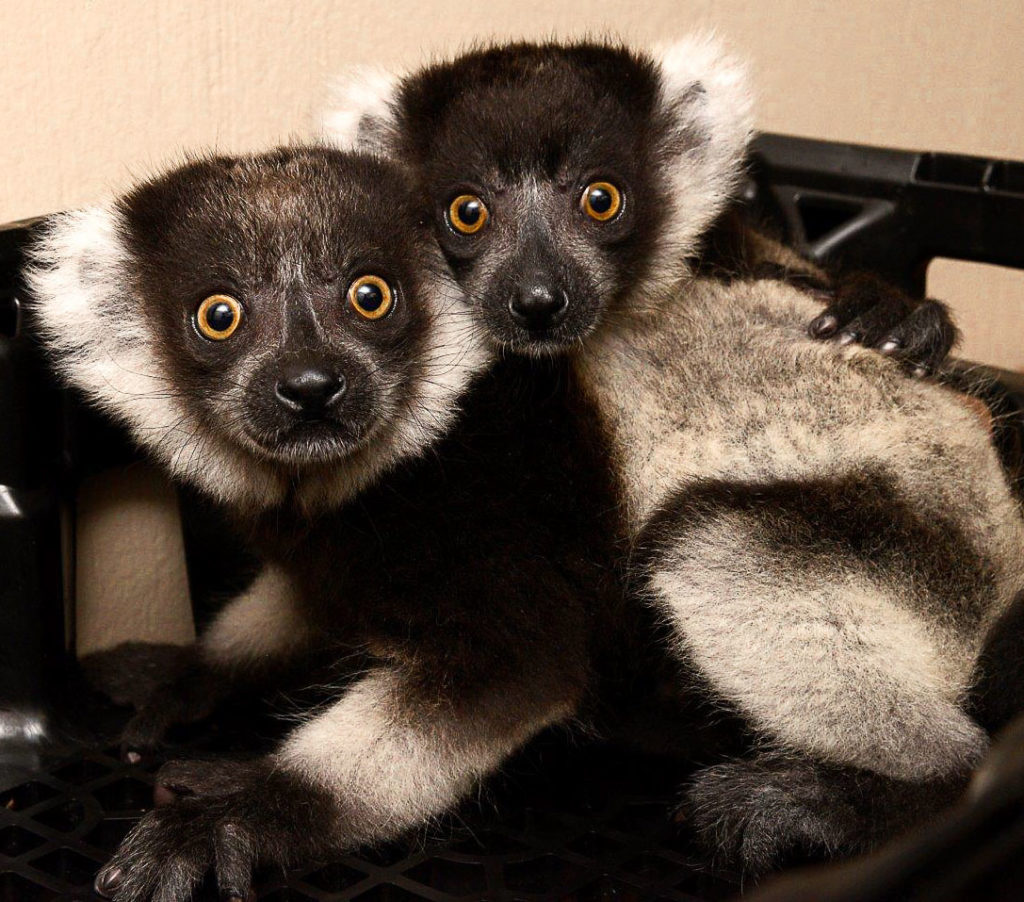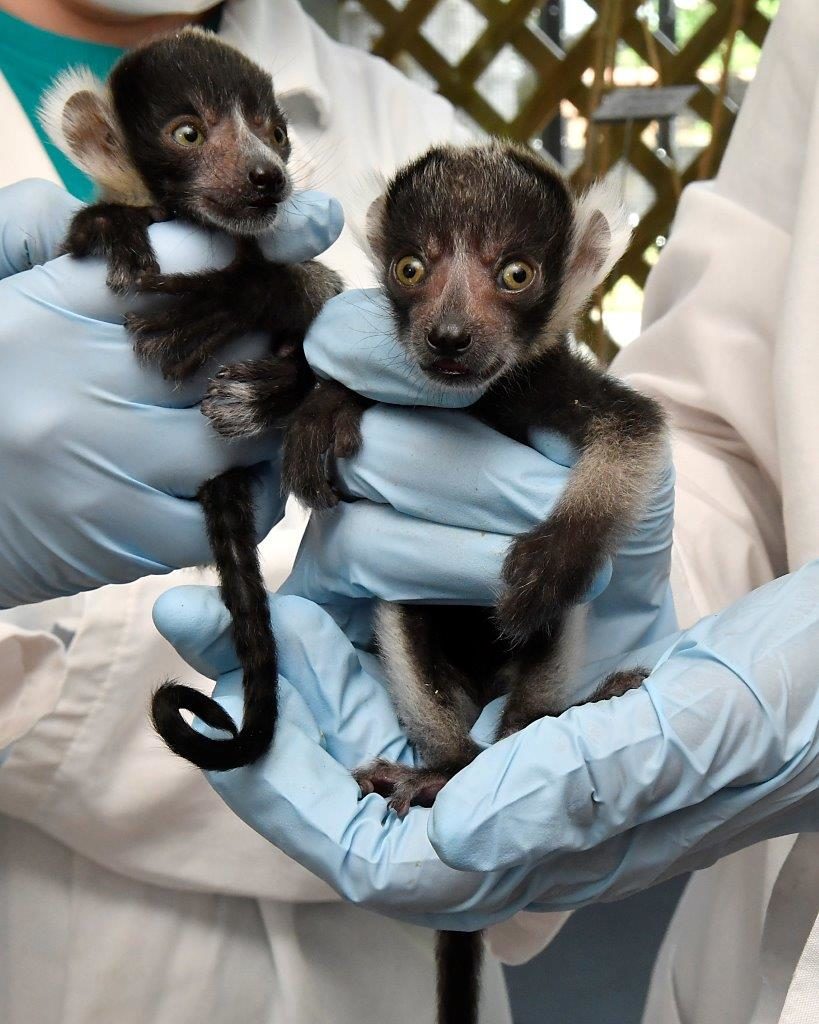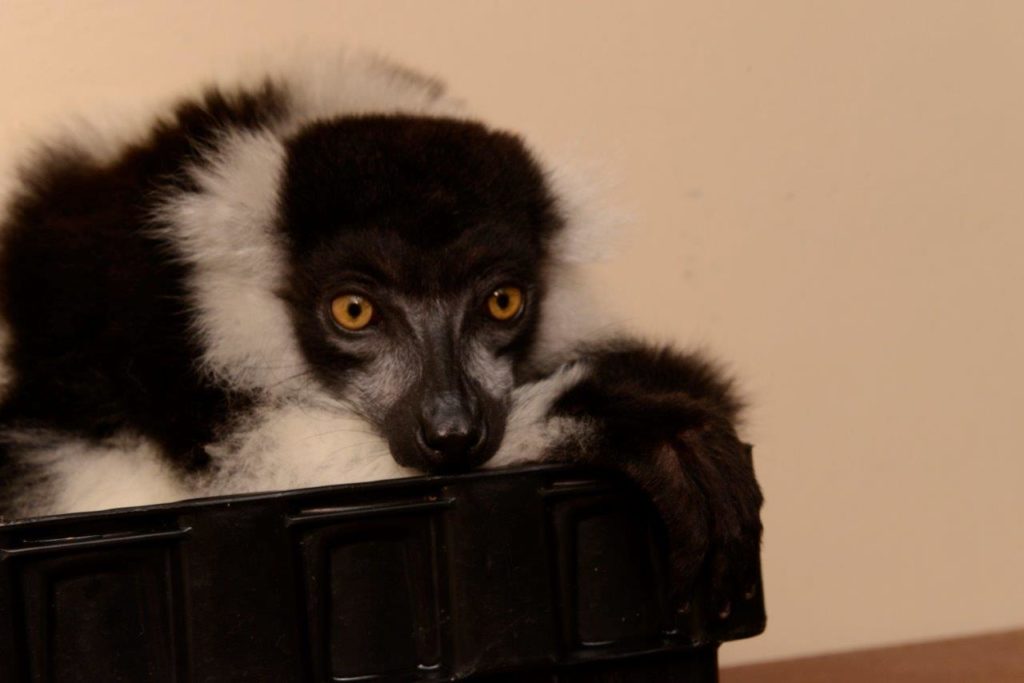Published June 6, 2018
By Laura Jones, Communications Intern

Critically endangered ruffed lemur twins Harriot and Helene were born at the Duke Lemur Center on May 6, 2018. Photo by David Haring.
The Duke Lemur Center is ecstatic to announce the birth of siblings Harriot and Helene — a pair of critically endangered black and white ruffed lemurs (Varecia variegata variegata). The twin sisters were born to 5-year-old mom Halley and her 15-year-old mate Ravo on May 6, 2018. They are the second set of twins for the parents!
Black and white ruffed lemurs at the DLC are commonly given celestial themed names. Harriot shares her name with an impact crater on the Moon, which in turn was named for English astronomer Thomas Harriot: the first person to observe the Moon through a telescope. Little Helene is named for one of Saturn’s moons.
Unlike most other ruffed lemurs, it is easy to tell the difference between Harriot and Helene. Helene is larger and sports an impressive white ruff, whereas Harriot is smaller with a delicate appearance. Because Mom Halley is so attentive to her infants, Harriot and Helene are absolutely thriving!
Black and white ruffed lemurs are native to the montane (mountainous) rainforests of eastern Madagascar. Their thick fur helps provide insulation from the wet climate, as they travel throughout the forest canopy. These ruffed lemurs are also special for other reasons. They are one of the largest living lemurs, reaching weights of up to nine pounds (4.1 kg). Black and white lemurs are also adept pollinators, consuming lots of fruit, nectar, seeds, and leaves.
But perhaps the most intriguing aspect of the black and white ruffed lemur behavior is their ability to build nests, particularly when a mother has offspring to care for. In fact, it is believed that ruffed lemurs – both black and white ruffed lemurs and their cousins, the red ruffed lemurs – are the only type of primate to build these exclusive nests for their young! Halley was observed doing as much, and nested her infants snugly inside a kennel shortly after their birth.
Black and white ruffed lemurs in the wild are currently CRITICALLY ENDANGERED, a term applied to species when the International Union for Conservation of Nature (IUCN) considers them to have a very high risk of becoming extinct. Habitat degradation, such as slash-and-burn agriculture, logging, and mining, are the main threats towards the species’ survival.
You can help contribute to the vitality of the black and white ruffed lemurs by “adopting” Halley! Adoption packages may be seen here, and every contribution helps provide the complex care that all lemurs, including Halley and her new family, receive every day at the Duke Lemur Center.

Harriot and Helene being weighed the day after birth. Photo by David Haring.

Receiving a routine check-up. Photo by David Haring.

The twins’ mother, Halley, on the “nest” with her infants nursing under her. Photo by David Haring.

Ruffed lemur infographic for the Duke Lemur Center tour path (c) Caitlin Hansen. Click the image for a larger view.

